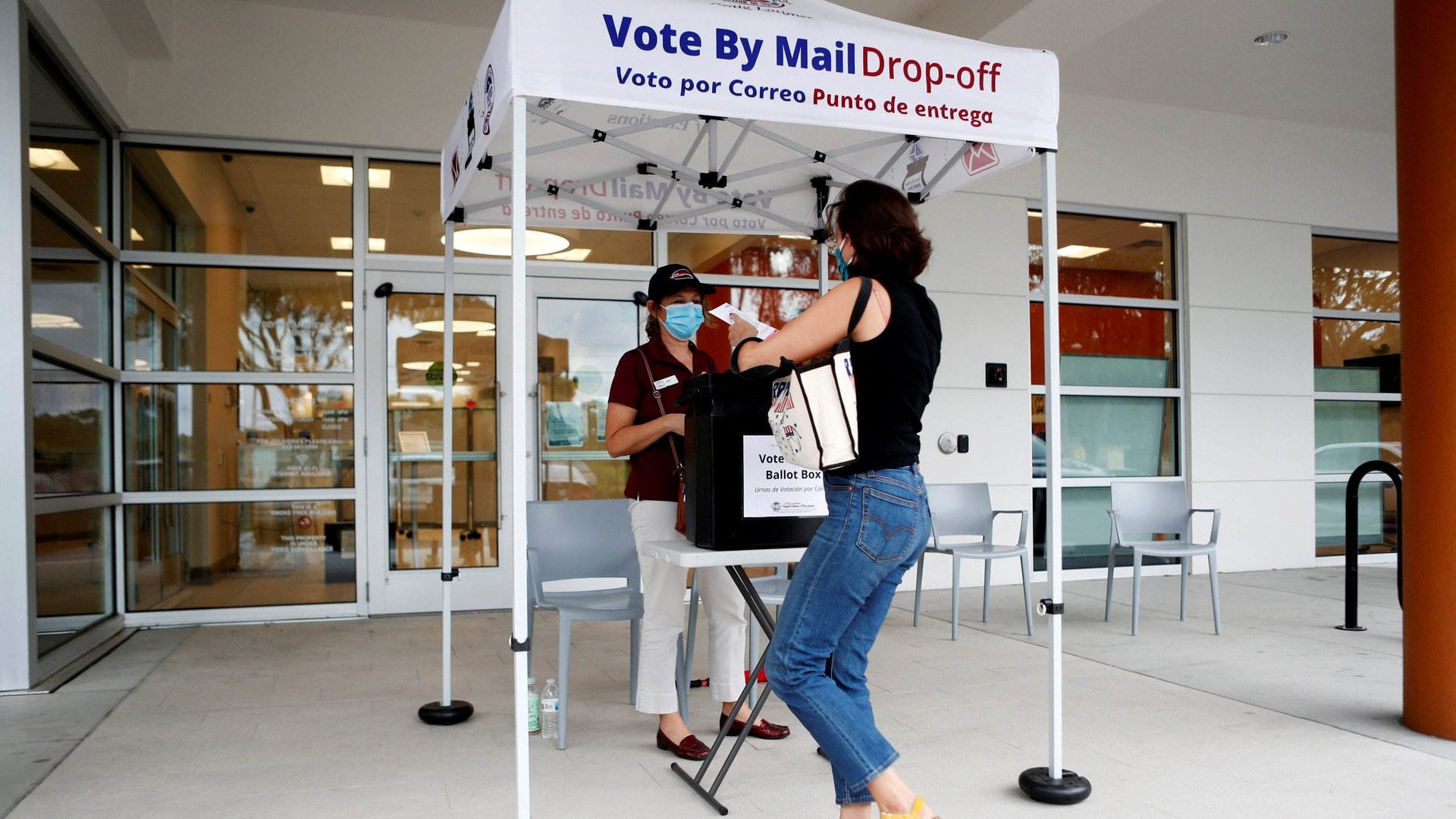Making mail-in voting free is a quick way to raise voter turnout
There’s only few weeks to go to the US presidential election, and most of the country is still struggling with Covid-19. Recommendations to maintain a safe distance and avoiding crowded spaces make polling stations undesirable, and more voters than ever are expected to opt for mail-in ballot.


There’s only few weeks to go to the US presidential election, and most of the country is still struggling with Covid-19. Recommendations to maintain a safe distance and avoiding crowded spaces make polling stations undesirable, and more voters than ever are expected to opt for mail-in ballot.
Currently, there are five states in the US—Colorado, Hawaii, Oregon, Utah, and Washington—that run “all-mail” elections. In these states, all voters receive their ballot via mail, even though they can choose to vote in person in a few locations should they prefer to.
Of the five, Colorado and Utah ask voters to pay postage to mail their votes. According to the Brennan Center for Justice, a nonpartisan law and policy institute, the other three—Hawaii, Oregon, and Washington—are among the 24 states (and Washington, DC) that provide postage-paid envelopes to return ballots.
In the rest of the country, however, voters have to pay to mail their votes—and often enough, the ballot papers they receive don’t include exact information on the amount of postage necessary. The US postal service (USPS) will deliver the ballot even if it doesn’t have the correct postage amount—or, in fact, any postage at all—but this fact typically isn’t advertised in the voter information.
Therefore, postage can become an obstacle to voting. People might not have stamps readily available, know where to get them, have the time to procure them, or even be able to pay for them (depending on the election, postage can be more than $3). Further, with the added complications of the pandemic—for instance remote work, or lack of childcare—voters might prefer staying away from stuffy government buildings that can house post offices. Young voters, too, might be entirely unfamiliar with buying stamps at all.
Postage is but one of several compounding barriers voters might face. Several states—Alaska, Alabama, Maine, Mississippi, Missouri, Oklahoma and South Dakota—require notarization of mail-in ballots, don’t make online registration available, or have limited voting hours.
Still, many states have found ways to provide their voters with postage-paid ballots, and there is a push for all others to follow. After all, many countries, including the UK, Italy, and Canada, cover mailing costs for ballot material both within their country, and typically abroad, too.
“Voting should be easy and free for everyone eligible. We should be striving to remove all barriers to voting— including eliminating the requirement of paid postage on mail-in ballots,” said Sydney Rose, Director of Programs at Vote.org, the US’s largest nonpartisan voter registration nonprofit, in a statement.
But mail delivery comes at a cost, which would either fall on the USPS—which is already stretched rather thin at a time when its services are of unprecedented importance to democracy—or on the states. In the latter case, this typically happens at the expense of another voter service, for instance polling station personnel, or on the number of voting machines in physical polls. “Election administrators don’t have the resources to do all that they need, so they have to make hard choices,” says Myrna Pérez, the director for voting rights and elections at the Brennan Center.